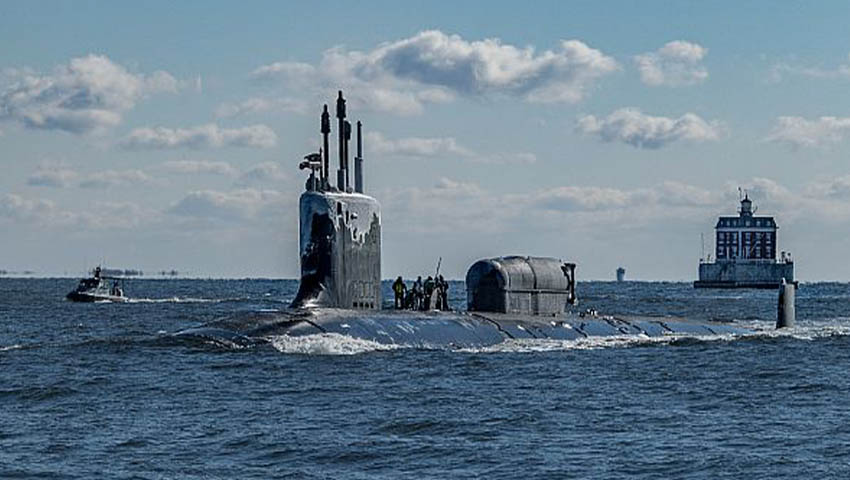Opinion: The current work by the greatly expanded Nuclear Powered Submarine Task Force must extend to consultation with proven designers and builders of nuclear submarines for other navies, in this case the UK and USA, writes former naval officer and defence industry analyst Chris Skinner.
To continue reading the rest of this article, please log in.
Create free account to get unlimited news articles and more!
To proceed without such consultation will almost certainly result in significant cost, schedule and materiel shortfalls due to the lack of the deep knowledge and experience possessed by the companies that have done the work before.
The temptation for reasons of political sensitivity or overzealous commercial confidentiality may be compelling for Australia with limited experience in setting up submarine programs and none in the nuclear propulsion domain. The reality is that only companies that are engaged all the time in such work are fully able to understand the complexity and the practical ways to manage the process.
But you might exclaim the task force is still analysing the best way forward and is therefore reluctant to discuss options and issues with potential suppliers. This is very simplistic and unwise as there is ample scope to enter a carefully managed dialogue with the two main companies – General Dynamics Electric Boat (GDEB) for the Virginia Class and BAE Systems for the Astute Class.
The mechanism for such dialogue to occur is through project definition studies (PDS) with very clear constraints on the information to be used for the study and the scope of the deliverables from the studies. Ideally a first order of business for the task force in 2022 would have been the execution of several such studies with GDEB and BAE Systems and also with several other companies from whom major supplies, especially the nuclear reactors, would be sourced. So that adds two more PDS from Rolls-Royce and from Westinghouse. And there will be more for related technologies and supplies.
What seems to be happening instead is a multi-faceted three-way dialogue between government agencies in three countries without the practical input from potential suppliers as proposed here. This relies on the prior commercial relationships between the UK and Astute suppliers and the USSA and Virginia suppliers.
But these don’t necessarily work the same way in an Australian program and to rely on the third-party relationships already existing is high risk as the legal and commercial environment in the UK and USA is markedly different to Australia. Furthermore, there is no incentive for either AUKUS principal supplier to optimise the way ahead for Australia’s benefit. Their only incentive is to be the successful source.
The timeline for the AUKUS SSN program for Australia is already under intense scrutiny and if the outcome from the task force is only the governmental consensus without the consultation with the prospective contractors, then there will be a considerable delay while that dialogue is broached.
It need not be so and there is still time for short, sharp PDS to be put into effect to report by November on the most pressing issues that will not only inform the task force recommended selection but also give much greater confidence on the timeline and workforce challenges that will be faced.
Subjects worthy of PDS would include:
- equipment acquisition strategy with attention to multiple site construction of submarine modules;
- steel production for pressure hull and management of supplies between concurrent building sites;
- land-based test sites required for propulsion system acceptance by Australia;
- training facilities in Australia and source country as part of acquisition program;
- welding of pressure hull modules in multiple sites;
- acoustic and magnetic signature management;
- nuclear reactor acceptance, initial fuelling and transportation to final assembly site;
- management of nuclear reactor fuel load for lifetime operation; and
- the influence of SUBSAFE affect design, construction and acceptance.
There are ample precedents for the successful management of the start of major acquisition programs and this SSN program is no different in principle. Time for Australia’s approach to follow well-proven practice from experienced countries including the UK and USA.
Australia is very fortunate to have two options for AUKUS, both based on well-proven designs that have been constructed by highly experienced companies. Best we make full use of that experience.
Christopher Skinner served 30 years in the Australian Navy as a weapons and electrical engineer officer in six surface warships, including all three of the previous guided missile destroyers. He was seconded to the US Naval Sea Systems Command to manage the trials of the USS Oliver Hazard Perry FFG-7 first of class, and was the initial project director for the RAN Anzac Frigate Program. His interest in nuclear power for submarines is more recent and is reflected in his membership of the Engineers Australia, Sydney Division Nuclear Engineering Panel, the Australian Nuclear Association and the American Nuclear Society. He is also associated with several other organisations and institutes engaged in geopolitics, technology and submarine matters. The views expressed above are entirely those of the author and are not endorsed by any of the organisations of which he is a member.

 Login
Login







